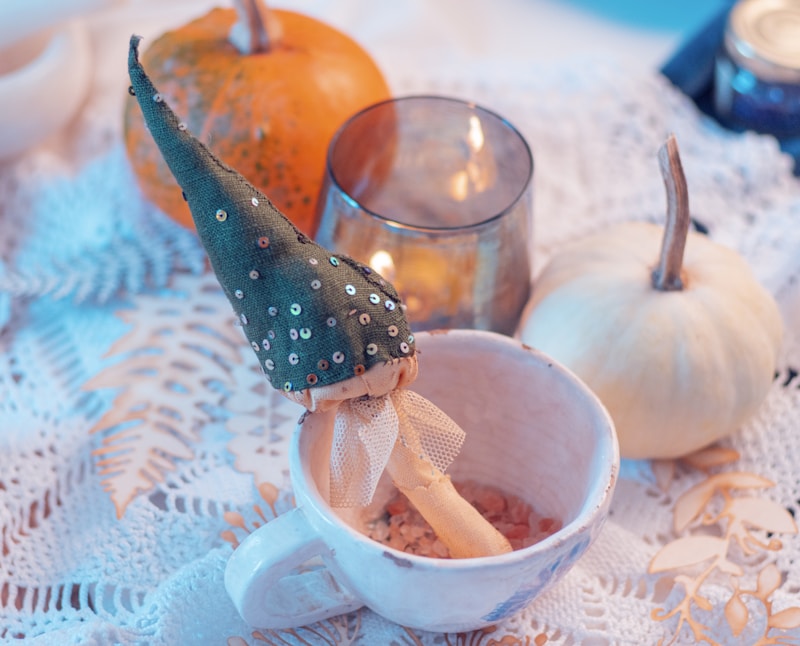Mastering the Art of Handling Lace and Embellishments: A Comprehensive Guide
Introduction to Lace and Embellishments
The world of fashion and design is replete with unique materials that add elegance and sophistication to any creation. Lace and embellishments are two such elements that can elevate the aesthetic of garments and crafts. In this article, we aim to provide a detailed guide on handling lace and embellishments, which will help enthusiasts and professionals alike to incorporate these beautiful elements into their work seamlessly.
Understanding Lace and Embellishments
Lace is a delicate fabric made from threads of cotton, silk, or synthetic fibers, often characterized by intricate patterns and designs. It has been a beloved material in fashion for centuries and is commonly used in bridal wear, evening gowns, and a variety of accessories. Embellishments, which include beads, sequins, rhinestones, and appliqués, serve as decorative elements that add texture and shine to garments. Together, lace and embellishments can transform simple designs into stunning masterpieces.
Choosing the Right Lace and Embellishments
When it comes to handling lace and embellishments, the first step is choosing the right materials. Various types of lace, such as Chantilly, Guipure, and Alençon, each have distinct qualities and uses. Understanding the characteristics of each type will help you select the most suitable lace for your project.
| Type of Lace | Description | Typical Use |
| Chantilly Lace | Soft, luxurious lace with floral patterns | Bridal gowns, fancy dresses |
| Guipure Lace | Heavy lace with a stiffer texture, often with large motifs | Home décor, structured garments |
| Alençon Lace | Delicate and intricate, often featuring floral designs | Bridal and evening wear |
Preparing to Work with Lace and Embellishments
Once you have selected the appropriate lace and embellishments for your project, preparation is key. Here are some tips:
- Pre-wash your lace: Before starting your project, it’s advisable to pre-wash lace to prevent shrinkage after sewing.
- Iron your materials: Use a low heat setting and a pressing cloth to remove wrinkles without damaging delicate threads.
- Gather necessary tools: Ensure you have all your sewing supplies handy, including needles, threads, scissors, and embellishment adhesives.
Sewing with Lace and Embellishments
When stitching lace into your designs, consider these techniques:
- Use the right needle: A fine needle, such as a size 60/8, is essential for sewing lace to avoid snagging the delicate fabric.
- Employ a straight stitch: Use a straight stitch for most lace attachments to maintain its soft drape.
- Stabilize your seams: Adding stabilizers can help prevent lace from stretching or distorting during sewing.
- Attach embellishments carefully: When adding embellishments, use a secure method like hand-sewing or specific fabric adhesives to ensure durability.
Finishing Touches with Lace and Embellishments
Once you have successfully sewn your lace and added embellishments, the finishing touches are crucial. Consider these steps:
- Trim excess lace: Cut away any excess lace to clean up the edges and provide a polished look.
- Secure loose embellishments: Double-check that all embellishments are securely attached and make adjustments as needed.
- Steam your garment: Carefully steam your finished project to remove any residual creases while being cautious with the lace.

Common Mistakes to Avoid
While working with lace and embellishments, there are common mistakes to watch out for:
- Ignoring fabric compatibility: Always ensure that the lace and embellishments you choose will work well with your base fabric to avoid issues during sewing.
- Being too heavy-handed: When adding embellishments, less is often more. Applying too many can overwhelm the lace and diminish the overall effect.
- Neglecting care instructions: Many lace fabrics require special care. Always read the labels to ensure your garment retains its beauty over time.
Conclusion
Handling lace and embellishments can be a rewarding endeavor that allows for immense creativity and expression in your projects. By understanding the materials, preparing correctly, and applying the right techniques, you can elevate your sewing skills. Remember to avoid common pitfalls, and take your time to enjoy the artistry involved in working with lace and embellishments. Whether you are making a stunning dress for a special occasion or adding a touch of elegance to your home décor, these materials hold the power to make your creations truly memorable. Happy sewing!